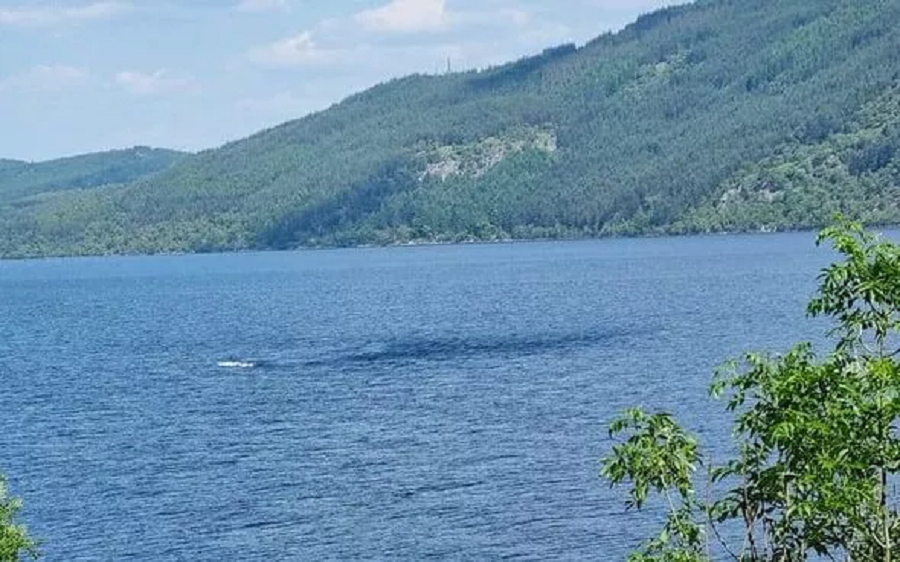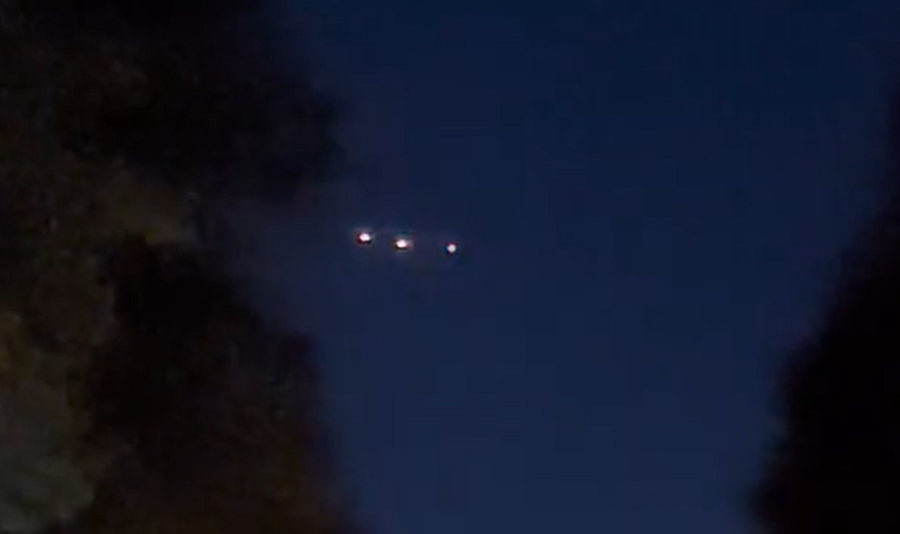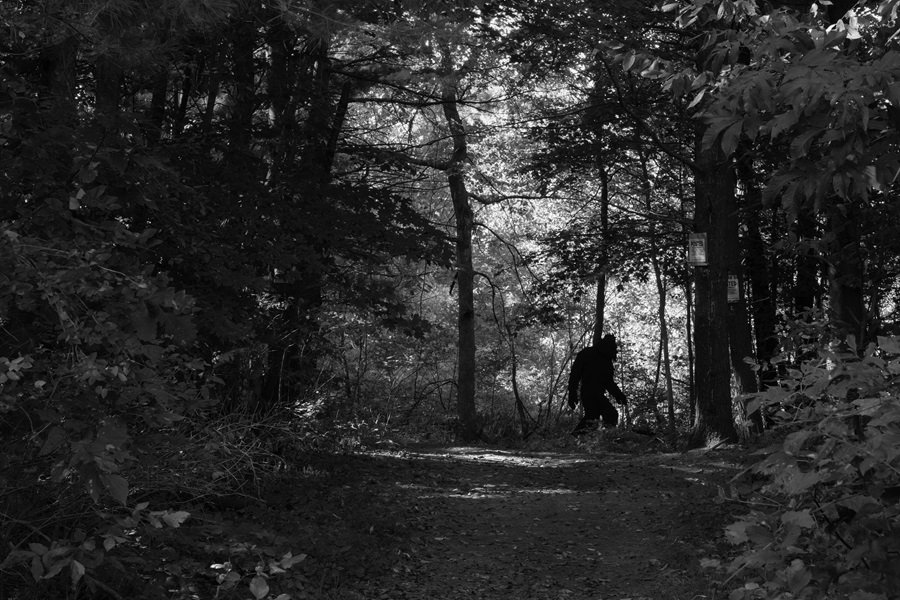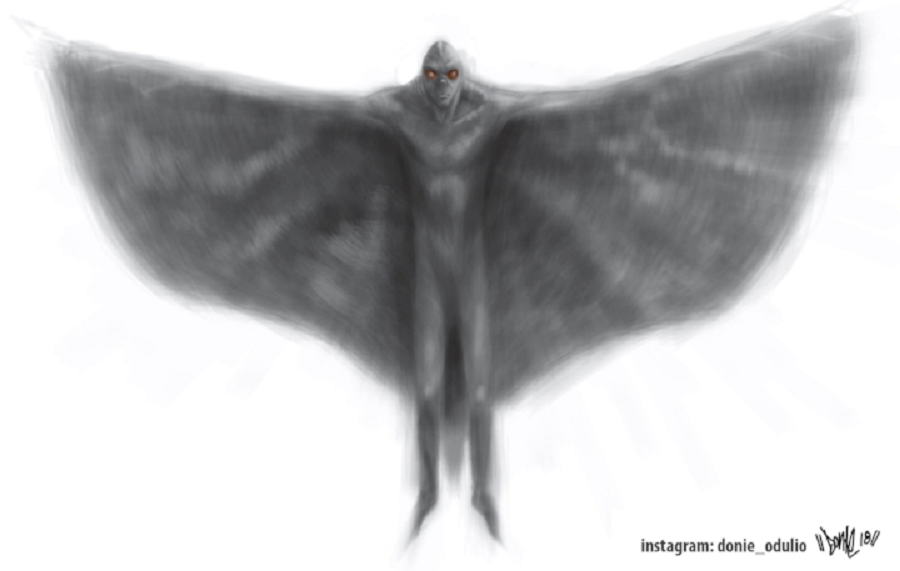Four "Official" Sightings of Loch Ness Monster Reported in August
Four reports published in August by The Official Loch Ness Monster Sightings Register bring the total number of reported Nessie—as the monster is affectionately known—sightings up to seven so far in 2023.
The first sighting came at around 1 p.m. on August 17th from Steve Valentine, who was visiting Scotland's Loch Ness while on holiday from Urmston in Manchester with his family. They were returning from a tour of the loch when Valentine said he spotted something from the Deepscan boat they were aboard.
"I just saw a black shape in the water," he said. "It was when we were returning to the dock near to Urquhart Castle. I lost sight of it when the boat turned but managed to get a quick photo from a distance."
An enlarged image of the photo taken by Valentine. (Steve Valentine / The Official Loch Ness Monster Sightings Register)
The next two sightings took place on consecutive days during the investigation of Loch Ness by independent volunteer research organization Loch Ness Exploration—the largest investigation of its kind since 1972.
At 3:20 p.m. on August 26th, Alastair Gray said that he saw something unusual about halfway across the loch from his position near Invermoriston while participating in the investigation.
Gray, a civil servant, reportedly saw three odd and seemingly connected shapes in the water. One part of the shape was sticking out of the water at a 45-degree angle as two humps appeared to be rising and falling as though the object was moving.
A sketch of the object seen by Gray. (Alastair Gray / The Official Loch Ness Monster Sightings Register)
Then, on August 27th at 11:26 a.m., local resident Siobhan Janaway said, "There was something causing turmoil in the water off Foyers Point then it coalesced into a single object moving at speed just under the surface causing at least a 20m [65ft] white wake."
Although Janaway at first thought a boat might be responsible for the wake, she claimed there were no boats near the location at the time of her sighting.
Janaway’s sighting is similar to that of French tourist Etienne Camel, a pharmacist from Lyon who, along with his wife Eliane, claimed to have seen a 65-foot-long dark object moving below the surface of Loch Ness while visiting the area on June 15th of this year.
A photograph of the wake seen by Janaway. (Siobhan Janaway / The Official Loch Ness Monster Sightings Register)
Finally, at 10:45 a.m. on August 31st, visitor Fiona Wade reported a shape similar to that reported by Alastair Gray just a few days before.
"It was almost identical to that seen on Saturday and probably in a very similar location," she said. "I might add that I was not aware of this sighting on Saturday until returning home this evening. It initially looked like a periscope but then two curved areas followed, it was moving and about halfway out in the loch looking roughly over to mid-way between Foyers and Whitebridge. I have seen deer crossing before, but this was like nothing I have seen before, and I can only describe it as Nessie as I can't think of any logical thing it could have been. It was large enough to catch my eye and it appeared to leave a slight wake behind it."
The water was reportedly flat and calm with no nearby boat activity during Wade's sighting, which lasted about 30 to 40 seconds.
One popular skeptical explanation for sightings of strange wakes are rogue waves.
Rogue waves are waves caused by wind, currents, and other circumstances, that are far larger than the "average" waves of a given time and place. Many skeptics believe that rogue waves can be mistaken for the wake of a large animal.
And mundane objects like driftwood or animals such as otters are often used by skeptics to explain sightings of a physical monster.
However, some believe that sightings of strange moving objects in Loch Ness—like those reported by Gray or Wade—are indicative of a surviving population of plesiosaurs, although others argue that more recent scientific study makes that possibility unlikely.
Plesiosaurs, aquatic reptiles who first appeared in the fossil record around 200 million years ago and were thought to have died off 66 million years ago (the same time as the dinosaurs), are a popular explanation for the monster said to inhabit Scotland’s Loch Ness; an explanation first introduced in the 1930s and later popularized by naturalist Sir Peter Scott and zoologist Denys Tucker.
Supporters of the hypothesis point to the long necks of plesiosaurs and postulate that this explains why witnesses sometimes describe seeing a neck-like appendage with a small head attached sticking up out of the water.
In the case of Janaway or the Camel's sighting, they might argue that they had only seen the creature just below the surface.
But despite recent findings that suggest plesiosaurs were adapted to tolerate freshwater and might have even spent their entire lives in it, a research project published to the Journal of Vertebrate Paleontology by scientist Paul Scofield showed that plesiosaurs were actually very unlikely to ever lift their heads above the water.
It is much more likely, according to Scofield, that plesiosaurs used their long necks to dredge the seafloor.
"They have these enormous teeth arranged in rows like a grappling iron," he explained. "It has been hypothesized that they floated on the surface and dredged the seafloor blowing the dirt out through their teeth and leaving just the clams. Thus, their feeding method dictates the neck length—it's just like the giraffe but in reverse."
Some believers might argue that this only explains why any plesiosaurs inhabiting Loch Ness aren’t seen with their heads above water more often, but Scofield dismisses any belief in the monster entirely.
"I totally reject the idea that Nessie exists and that it is an elasmosaurus," he said. "Loch Ness monster records are a mixture of fakes and mistakes."
This wasn’t the first time within the past several years that the plesiosaur hypothesis had taken a beating in the court of public opinion.
A 2019 study conducted by Neil Gemmell, a New Zealand scientist and professor at the University of Otago, caused quite a stir when it failed to turn up any evidence of plesiosaurs in Loch Ness.
Gemmell's study involved gathering water samples from multiple locations and at different depths of the loch to scan for bits of animal DNA, and then working to identify it. The samples were sent to labs in New Zealand, Australia, Denmark, and France which used large sequence databases to compare the DNA found in Loch Ness with the majority of known living things. This was done to help distinguish and identify any potentially unknown genetic material.
The results revealed no evidence of any large animals such as sturgeon, catfish, sharks, or surviving prehistoric plesiosaurs, but they did show an abundance of eel DNA.
However, it should be noted that the study was not comprehensive and does not represent a definitive catalog of life in Loch Ness.
Despite this, many now point to giant eels as a possible explanation for the monster, although, as of yet, no proof of their existence in the loch has been found.
But cryptozoologist Ken Gerhard has another hypothesis for the Loch Ness Monster.
"Based on thousands of eyewitness descriptions, I’m convinced that Nessie is just one of many such unknown creatures around the globe—Norwegian sea serpents, Champ and Ogopogo here in North America, lake monsters in Scandinavia, Russia, Japan and Argentina, among others—and that these animals represent the very same species, most likely descended from an ancient group of serpentine whales," he told the Ross-shire Journal in 2021.
Some witnesses, like Francesa McGarvey, who reportedly saw a dark shape emerge from the loch last April, do describe what they’ve seen as having whale-like qualities.
Although the vast majority of whales are found in saltwater, some whales can occasionally be found in freshwater rivers and lakes looking for food.
Supporters of Gerhard’s hypothesis might argue that the relative scarcity of credible evidence for a “monster” in the loch might be because they don’t live there full-time, but rather, only travel there in search of food.
And yet, there is currently no proof of the existence of whales in Loch Ness, so the sightings remain unexplained.
























